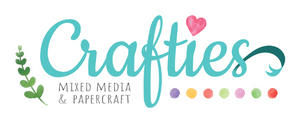Embossing 101
Date Posted:6 August 2021
Embossing is a centuries-old technique that has been carried on through the present day. This process can be used to add personalized touches or as accent pieces for the craft projects.
There is so much to learn about embossing and how you can utilize this art in your scrapbooking or cardmaking projects. Get artsy with the help of this embossing guide.
What is Embossing
Embossing is the popular art form of the 1900s. It adds a personal touch to the craft like no other. True to its name, embossing involves designs that are raised from the surface of the material. This function of embossing is incorporated in company logos, custom illustrations, and initials, or just to keep a touch of luxury to a pattern.
What's most captivating about embossing is that this technique can be applied to almost any kind of material. Malleable, thin, and flat materials like paper, wood, glass, plastic film, and fabric are just a few of the surfaces where you can emboss on.
For paper crafters, embossing is a simple way to add texture and dimension to your scrapbook pages, handmade cards or other paper crafts. There are many ways you can go about embossing designs such as using dedicated tools or creatively repurposing everyday objects.
How to Emboss: Heat Embossing and Embossing Powders
There are various techniques to emboss like a boss. You can use a die-cutting and embossing machine that presses designs and patterns to your cardstock or material on hand. However, if you don't have one, you can always try embossing by hand. You will be surprised by how simple the process is. Here is how:
Step 1. Have your embossing materials ready: embossing ink, desired stamp, a piece of paper, and acrylic block.
Step 2. Ink stamp using embossing ink. The ink will appear nearly invisible but it’s there. Stamp the ink on the piece of paper.
Step 3. Shake the embossing powder bottle before opening it. Sprinkle the powder on the stamped image while you hold the paper slightly tilted over the surface being used to catch the embossing powder. Make sure to have all parts of the stamped image sprinkled with powder.
Step 4. Flip the paper with the stamped image (with the embossing powder), and tap the back of the paper a few times using your thumb and forefinger to get rid of excess and stray bits of powder.
Step 5. Heat the stamped image using a heat gun or a heat tool for a few seconds. Make sure not to over melt the embossing powder. What you want to achieve is it will go from looking fuzzy to looking smooth and glossy.
Embossing Tools
Since there are different types of materials that you may choose to emboss, you will also need a variety of tools depending on those materials. For your next DIY project, you may need the following:
Embossing Powder
This adds to the magic of embossing. Embossing powder comes in a variety of hues and shades. You can also choose if you want the powder to be fine, superfine, or a bit chunky.
Embossing Folders
Most of these embossing folders are hard plastic folders that come in many different sizes and have 2 sides: one side having a raised impression and the other side having an indented impression. The pressure coming from an electronic or manual embossing machine presses the paper together to create a design on the material.
- Regular Embossing Folder - all of the embossed details have the same height (or the same depth).
- 3D Embossing Folders - the embossed details have various heights (or depth) and have more details. You can use either the debossed or the embossed side for your project.
Die-Cutting and Embossing Machine
If you are in for efficiency, then this machine will be perfect for you. It can emboss identical patterns in a single punch and works well on cards, thin-film metals, and fabric. These Die-cutting and Embossing Machines work great with embossing folders, embossing dies, and texture plates.
Heat Gun/Tool
The heat gun or multi-purpose heat tool emits a stream of hot air to melt the embossing powder and create a glittery or matte finish for your design.
Embossing Ink
Embossing ink is a specially formulated ink that is slow drying and allowed the embossing powder to stick to the surface of your project. It is the genius behind the raised effect of the design of your preference.
Stylus
This is a special type of embossing tool since it is used for dry embossing. The stylus is primarily employed by hand to trace a stencil or a pattern. It accentuates a card or any material.
Embossing Stencil
To do dry embossing, you’d need a stencil to create the design pattern. It could be a cardboard, plastic, or brass stencil.
One of the most fascinating and creative ways to enhance your craft project is by adding some embossing. Embossed items will stand out from all others, literally with raised texture on paper or figuratively for their creativity. With this technique, you'll always be at the top of your game!










